/Vehicles/Axis/Germany/01-lePanzers/PzKpfw1/File/3-Models.htm | Last Up-date: 07-03-2022
Panzerkampfwagen II Light Tank
Models: Pz.Kpfw II Ausf.a1/a2/a3/b
Les modèles a1/a2/a3/b/c étaient tous des modèles de présérie forts similaires de l'un à l'autre. Les trois premiers, les Pz.Kpfw II Ausf.a1/a2/a3s étaient propulsés par le 6 cylindres Maybach HL 57TR développant 130 cv couplé à une boîte de vitesse ZF Aphon SSG45 (vitesses: 6 avant - 1 arrière). L'autonomie opérationnelle était de 200 km sur route. Le blindage très léger variait entre 5 et 13 mm.
The models all a1/a2/a3/b/c were models of preproduction strong similar the one with the other. The three first, Pz.Kpfw II Ausf.a1/a2/a3s were propelled by the 6 cylinders Maybach HL 57TR developing 130 hp coupled to a gear box ZF Aphon SSG45 (speeds: 6 forward - 1 reverse). Operational autonomy was of 200 km on road. The very light shielding varied between 5 and 13 mm.
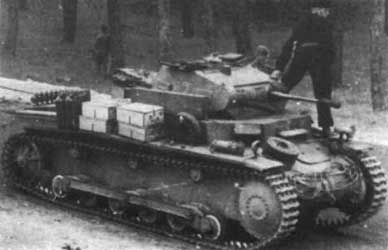 |
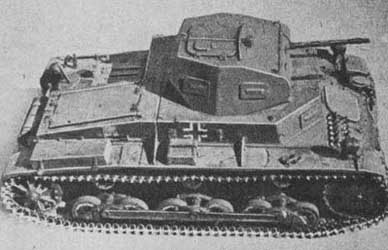 |
Panzerkampfwagen
II Ausf.a1 |
|
src: Site
"Panzerwaffe" |
src: Site Lexikon
der Wehrmacht |
Afin de résoudre les défauts des trois premières variantes, MAN et Daimler-Benz produisent le Pz.Kpfw II Ausf.b qui était doté d'une nouvelle transmission et un nouveau système refroidissement. L'Ausf.b était surtout propulsé par le moteur 6 cylindres Maybach HL 62TR développant 140 cv qui deviendra le moteur standard du Panzer II.
In order to solve the defects of the first three variants, MAN and Daimler-Benz produce Pz.Kpfw II Ausf.b which was equipped with a new transmission and a new cooling system. Ausf.b was especially propelled by the six-cylinder Maybach HL 62TR motor developing 140 hp which will become the standard engine of Panzer II.
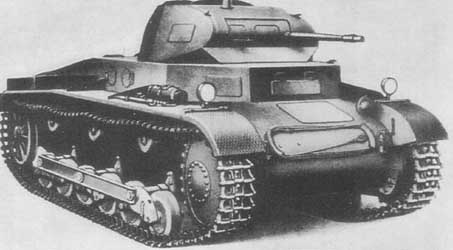 |
 |
Panzerkampfwagen
II Ausf.b |
|
Panzer II - Horst Scheibert,
Schiffer Military History |
src: Site Lexikon
der Wehrmacht |
Tous ces modèles étaient armés du canon de 20 mm KwK 30 et d'une mitrailleuse de 7.92 mm MG 34.
All these models were armed with the gun of 20 mm KwK 30 and a machine-gun of 7.92 mm MG 34.
Data |
Drawings |
C'est en mars 1937, que fait son apparition le Pz.Kpfw II Ausf.c avec une nouvelle suspension qui deviendra la suspension standard du Panzer II. Celle-ci comprenait 5 grands galets indépendants montés sur ressorts à lames et 4 rouleaux porteurs.
It is in March 1937, that made its appearance Pz.Kpfw II Ausf.c with a new suspension which will become the standard suspension of Panzer II This one included 5 independent large road wheels assembled on leaf springs and 4 return rollers.
 |
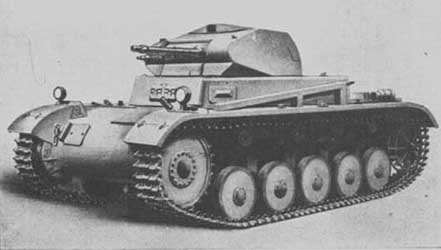 |
Panzerkampfwagen
II Ausf.c |
|
src: Site
"Panzerwaffe" |
src: site Photos
Gallery of WW2 |
Les modèles suivants, les Pz.Kpfw II A/B/Cs apporterons quelques améliorations mineures par rapport au modèle c. Le blindage y sera surtout légèrement amélioré pour atteindre les 14.5 mm d'épaisseur sur la caisse et jusqu'à 16 mm pour le masque. Notons qu'à partir de mai 1940, des plaques de blindages supplémentaires seront montés sur le Panzer II avec un intervalle pour annuler le plus possible le pouvoir perforant des projectiles ennemis. Les modèles c/A/B/C pesaient 8900 kg.
The following models, Pz.Kpfw II A/B/Cs will make some minor improvements compared to the model c. The shielding will be especially slightly improved there to reach the 14.5 mm thickness on the hull and up to 16 mm for the mask. Let us note that as from May 1940, of the additional armour-plates will be mounted on Panzer II with an interval as much as possible to cancel the perforating capacity of the enemy projectiles. The models c/A/B/C weighed 8900 kg.
 |
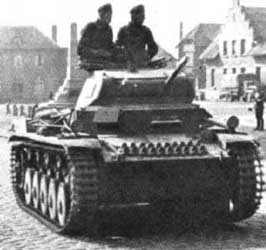 |
Panzerkampfwagen
II Ausf.A |
|
src: Site Lexikon
der Wehrmacht |
src: site
Juggernauts of WW2 |
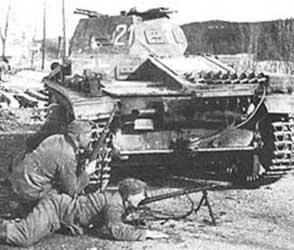 |
 |
Panzerkampfwagen
II Ausf.B |
|
src: Site Panzer
Page von Reitsch |
src: Site Lexikon
der Wehrmacht |
Le fait le plus remarquable avec le changement de suspension fut l'adoption sur ces 4 modèles du moteur essence à 6 cylindres, Maybach HL 62 TR développant 140 cv à 2600 tours qui deviendra le moteur standard du Panzer II. Les modèles A/B/C étaient également munis de la boîte de vitesse ZF APHON SSG 46.
The most remarkable fact with the change of suspension was the adoption on these 4 models of the gasoline engine of 6 cylinders, Maybach HL 62 TR developing 140 hp to 2600 rounds which will become the standard engine of Panzer II. Models A/B/C were also provided with the gear box ZF APHON SSG 46.
 |
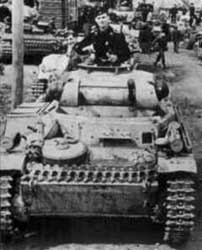 |
Panzerkampfwagen
II Ausf.C |
|
src: Site Panzer
Page von Reitsch |
src: Site
"Panzerwaffe" |
Data |
Drawings |
Les Pz.Kpfw II Ausf.D/Es, qui apparurent en mai 1938, étaient des véhicules de combat rapides (Schnellkampfwagen) conçus par MAN pour les unités de Cavalerie. Le design de ces deux modèles était totalement nouveau par rapports aux modèles précédents sauf pour la tourelle. L'armement était le même mais le blindage fut amélioré pour atteindre à l'avant les 30 mm.
Pz.Kpfw II Ausf.D/Es, which appeared in May 1938, were fast fighting vehicles (Schnellkampfwagen) designed by MAN for the Cavalry units. The design of these two models was completely new compared to the preceding models except for the turret. The armament was the same one, but the shielding was improved to reach with before the 30 mm.
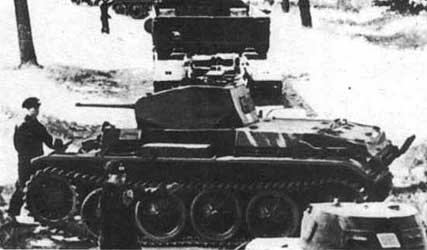 |
Panzerkampfwagen
II Ausf.D/E |
src:
Site
"Panzerwaffe" |
Les modèles disposaient d'une nouvelle suspension de type Christie développée également par les Britanniques et les Soviétiques, comprenant 4 galets indépendants montés sur des barres de torsion et aucun rouleau porteur. Les deux modèles étaient propulsés par le moteur essence à 6 cylindres Maybach HL 62 TRM développant 140 cv à 2600 tours et une boîte de vitesse Maybach Variorex VG 102128 à 7 rapports, leur permettant d'atteindre les 56 km/h sur route. Cependant les défauts de la suspension FAMO/Christie limitaient fortement leurs performances en tout terrain. Les deux versions se différenciait au niveau des chenilles et galets de roulement.
These models had a new suspension of the Christie type also developed by the British and the Soviets, including 4 independent road wheels assembled on torsion bars and any return roller. The two models were propelled by the gasoline engine of 6 cylinders, Maybach HL 62 TRM developing 140 hp to 2600 rounds and a gear box Maybach Variorex VG 102128 to 7 speeds, enabling them to reach the 56 km/h on road. However the defects of the FAMO/Christie suspension strongly limited their cross-country performances. The two versions was different on the level of the tracks and road wheels.
Data |
Drawings |
Le Pz.Kpfw II Ausf.F, apparu en mars 1941, était une version amélioré du Pz.Kpfw II Ausf.C et fut conçu par FAMO. Ce modèle fut la dernière version standard de la série des Panzers II (comprenant les modèles c/A/B/C/F) et comprenait toujours la suspension à 5 grands galets indépendants et 4 rouleaux porteurs.
Pz.Kpfw II Ausf.F, appeared in March 1941, was a version improved of Pz.Kpfw II Ausf.C and was conceived by FAMO. This model was the last standard version of the series of Panzers II (including the models c/A/B/C/F) and always included the suspension with 5 large independent road wheels and 4 return rollers.
 |
 |
Panzerkampfwagen
II Ausf.F |
|
src: Site
Panzer
Page von Reitsch |
src: Site
"Panzerwaffe" |
Cependant son armement fut modifié par l'adoption du canon de 20 mm KwK 38 L/55 alors que la provisions des armes restait la même: 180 coups de 20 mm, 2750 coups de 7.92 mm. Le blindage maximum atteignait les 30 mm et ce modèle comprenait de nombreuses modifications au niveau design, masque, suspension... par rapport au modèle C. L'Ausf.F pesait 9.5 tonnes.
However its armament was modified by the adoption of the gun of 20 mm KwK 38 L/55 whereas the provisions of the weapons remained the same one: 180 rounds of 20 mm, 2750 rounds of 7.92 mm. The maximum shielding reached the 30 mm and this model included many modifications on the level design, mask, suspension... compared to the model C. Ausf.F weighed 9.5 tons.
Data |
Drawings |
A part les Pz.Kpfw II Ausf.D/Es, d'autres projets de chars de reconnaissance rapides furent étudiés sur base du châssis du Pz.Kpfw II. D'avril 1941 à août 1942, plusieurs prototypes (nA - neuer Art) tels que le VK 901 - Pz.Kpfw II Ausf.G1/G2/G3, le VK 903 - Pz.Kpfw II Ausf.H, le VK 1601 - Pz.Kpfw II Ausf.J et le VK 1301 (Pz.Kpfw II Ausf.M) furent mis au point par MAN.
Le Pz.Kpfw II Ausf.G nA (VK 901) était armé la mitrailleuse lourde EW141 de 20 mm et d'une MG 34 standard alors que l'armement des Pz.Kpfw II Ausf.H/J/Ms était standard, c'est-à-dire composé du canon de 20 mm KwK 38 L/55 et d'une mitrailleuse MG 34 de 7.92 mm. Le moteur du VK 901 était un 6 cylindres Maybach HL 45 développant 145 cv et permettant au char une vitesse de 51 km/h sur route. Le blindage frontal du VK 901 était épais de 30 mm et le char pesait 9.3 tonnes. . Le VK 901 basé sur le Pz.Kpfw II Ausf.D devait remplacé en théorie le modèle F mais sera lui même remplacé par le projet du VK 903. Notons que deux VK 901 furent modifiés en janvier 1942 par l'adoption d'un canon de 50 mm Pak 38 L/60, et seront testés sur le front est.
Separately Pz.Kpfw II Ausf.D/Es, other projects of fast tanks of reconnaissance were studied on the basis of the chassis of Pz.Kpfw II. From April 1941 to August 1942, several prototypes (Na - neuer Art) such as the VK 901 - Pz.Kpfw II Ausf.G1/G2/G3, the VK 903 - Pz.Kpfw II Ausf.H, the VK 1601 - Pz.Kpfw II Ausf.J and the VK 1301 (Pz.Kpfw II Ausf.M) were developed by MAN.
Pz.Kpfw II Ausf.G Na (VK 901) was armed heavy machine gun EW141 of 20 mm and a standard MG 34 whereas the armament of Pz.Kpfw II Ausf.H/J/Ms was standard, i.e. composed of the gun of 20 mm KwK 38 L/55 and of a machine-gun MG 34 of 7.92 mm. The engine of the VK 901 was one 6 cylinders Maybach HL 45 developing 145 hp and allowing to the tank a speed of 51 km/h on road. The frontal shielding of the VK 901 was thick 30 mm and the tank weighed 9.3 tons. The VK 901 based on Pz.Kpfw II Ausf.D had replaced in theory the model F but will be it even replaced by the project of the VK 903. Let us note that two VK 901 were modified in January 1942 by the adoption of a gun of 50 mm Pak 38 L/60, and will be tested on the eastern front.
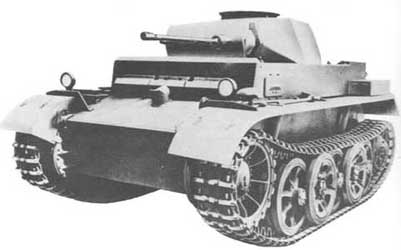 |
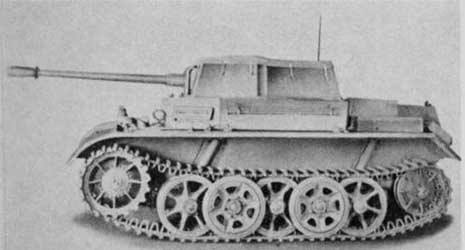 |
Panzerkampfwagen II Ausf.G |
Panzerkampfwagen II Ausf.H mit 50 mm Pak 38
L/60 |
src: Site
"Panzerwaffe" |
src: Site "Achtung
Panzer" |
Le Pz.Kpfw II Ausf.H nA (VK 903) avait la tourelle du VK 1303 qui deviendra plus tard le Lynx (Pz.Kpfw II Ausf.L) et était équipé d'un télémètre et d'instruments de repérage. La substitution des tourelles fait la preuve de l'énorme complexité du programme de développement de chars du IIIe Reich, car de plus à cette époque le châssis du Lynx avait déjà été construit par MAN.
Pz.Kpfw II Ausf.H Na (VK 903) had the turret of the VK 1303 which will become later the Lynx (Pz.Kpfw II Ausf.L) and was equipped with a rangefinder and instruments of location. The substitution of the turrets is the proof of the enormous complexity of the programme of development of tanks of IIIrd Reich, bus moreover at that time the chassis of the Lynx had already been built by MAN.
50
mm Pak 38 L/60 Penetration of a shielding plate (mm) under a plunging angle of 30° |
|||||||
Ammo
|
Weight
|
Velocity
|
100
m |
500
m |
1000
m |
1500
m |
2000
m |
| PzGr 39 | 2.06 kg |
835 m/s |
69 |
59 |
48 |
38 |
29 |
| PzGr 40 | 0.925 kg |
1180 m/s |
130 |
72 |
38 |
- |
- |
Pour compliquer un peu le tout, MAN et Daimler-Benz, en décembre 1939, réaliserent le prototype d'une version sur-blindée du Panzer II, le Pz.Kpfw II Ausf.J (VK 1601). Cette version fut équipée d'un Maybach III 45 de 200 cv ne permettant à peine au char d'atteindre sur route les 32 km/h à cause de son poids de 18 tonnes ! L'expension spectaculaire du poids vient du blindage très épais de cette version atteignant les 80 mm à l'avant, 50 mm sur les autres parois verticales et 25 mm sur les parois horizontales. L'armement était standard. Comme pour les autres modèles, la suspension du VK 1601 était constituée de cinq grands galets de roulement se recouvrant les uns les autres sans rouleau porteur. L'élasticité du système était assurée par des barres de torsion. Ce nouveau type de suspension donnera naissance à celles du Panther et du Tigre. Comme pour leurs imposants successeurs la suspension de ces modèles spéciaux de Panzer II, était sensible à la neige gélifiée qui pouvait coincer les chenilles, bien qu'elle assurait une excellente assise et une faible pression au sol.
To complicate a little the whole, MAN and Daimler-Benz, in December 1939, produced the prototype of an up-armoured version of Panzer II, Pz.Kpfw II Ausf.J (VK 1601). This version was equipped with Maybach III 45 of 200 hp hardly not making it possible to the tank to reach on road the 32 km/h because of its weight of 18 tons! The spectacular expension of the weight comes from the very thick shielding of this version reaching the 80 mm on the front, 50 mm on the other vertical walls and 25 mm on the horizontal walls. The armament was standard. As for the other models, the suspension of the VK 1601 consisted of five large rollers overlapping the ones the others without return roller. The elasticity of the system was ensured by torsion bars. This new type of suspension will give rise to those of the Panther and the Tiger. As for their imposing successors the suspension of these special models of Panzer II, was sensitive to the gelled snow which could wedge the tracks, although it ensured an excellent base and a low pressure on the ground.
 |
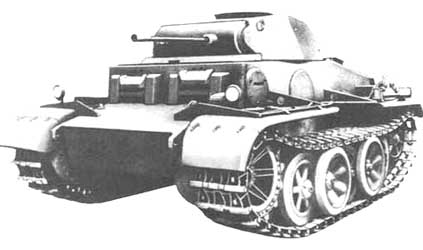 |
Panzerkampfwagen
II Ausf.J
|
|
src: Site Lexikon
der Wehrmacht |
src: site Photos
Gallery of WW2 |
Le Pz.Kpfw II Ausf.M (VK 1301) était en fait une version améliorée des VK 901 et 1601.
Pz.Kpfw II Ausf.M (VK 1301) was in fact a version improved of the VK 901 and 1601.
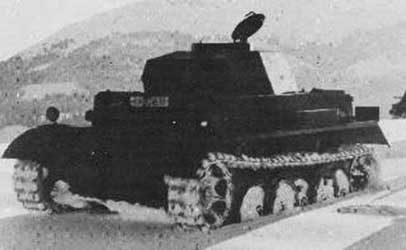 |
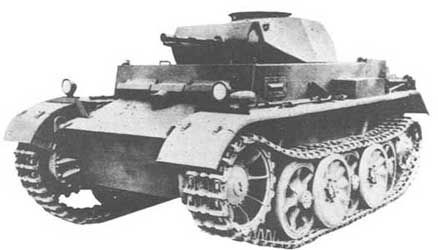 |
Panzerkampfwagen
II Ausf.M
|
|
src: Site Lexikon
der Wehrmacht |
src: site Photos
Gallery of WW2 |
Data |
Drawings |
Le Pz.Kpfw II Ausf.L "Luchs" (Lynx) découle directement des projets VK 1601 (Ausf.J) et VK 901 (Ausf.G). Le VK 901 était jugé trop léger et le VK 1601 trop lourd. Un compromis, le VK 1303 fit donc son apparition en avril 1942. Il ressemblait énormément au VK 901 extérieurement.
Pz.Kpfw II Ausf.L "Luchs" (Lynx) rises directly from projects VK 1601 (Ausf.J) and VK 901 (Ausf.G). The VK 901 was considered to be too light and the VK 1601 too heavy. A compromise, the VK 1303 thus made its appearance in April 1942. It resembled outside enormously to the VK 901.
/Photo-01.gvh.jpg) |
/Photo-02.ppvr.jpg) |
Panzerkampfwagen
II Ausf.L Luchs
|
|
src: Site www.wwiivehicles.com |
src: Site Panzer
Page von Reitsch |
Ce char conçu tout spécialement pour la reconnaissance reçut la désignation de Panzerspahwagen II (20 mm KwK 38) Luchs et le numéro de matériel Sd.kfz.123. Il pesait près de 13 tonnes et embarquait un équipage de 4 hommes. Le Lynx était propulsé par un 6 cylindres (essence) Maybach HL 66P développant 180 cv. La puissance était transmisse aux barbotins via une boîte de vitesse ZF Aphon SSG48 à 6 rapports synchronisés et une direction à différentiel commandé situées sur les arbres transversaux. Le groupe propulseur du Lynx lui permettait d'atteindre les 61 km/h sur route et de posséder une autonomie de 290 km. Comme le VK 901, le Lynx avait une suspension à barres de torsion avec galets entrelacés. Le blindage était épais à l'avant de 30 mm et sur les autres côtés de 20 mm.
Le châssis fut réalisé par MAN, la superstructure et la tourelle par Daimler-Benz. Cent exemplaires furent équipés du canon de 20 mm KxK 38 L/55 (420-480 coups par minute) avec lunette optique TZF6 alors qu'une trentaine furent équipés du canon de 50 mm KwK 39 L/60 dans une tourelle ouverte. Le Lynx était équipé d'un poste radio FuG 12 MW (80W) pour les communications externes + pour certains d'un poste FuG 6 et d'antennes additionnelles. Le Lynx servira jusqu'à la fin de la guerre sur les deux fronts au sein des Panzer-Aufklarungs-Abteilungen (bataillons de reconnaissance blindés) de la Wehrmacht et des Waffen-SS.
This tank conceived in particular for the reconnaissance accepted the designation of Panzerspahwagen II (20 mm KwK 38) Luchs and the material number of Sd.kfz.123. It weighed nearly 13 tons and took on board a crew of 4 men. The Lynx was propelled by one 6 cylinders (gasoline) Maybach HL 66P developing 180 hp. The power was transmitted to the sprocket-wheels via a gear box ZF Aphon SSG48 with 6 synchronized speeds and a direction with differential command located on the cross shafts. The power plant of the Lynx enabled it to reach the 61 km/h on road and to have an autonomy of 290 km. Like the VK 901, the Lynx had a suspension with torsion bars and interlaced road wheels. The shielding was thick in front of 30 mm and on the other sides of 20 mm.
The chassis was produced by MAN, the superstructure and the turret by Daimler-Benz. Hundred specimens were equipped with the gun of 20 mm KxK 38 L/55 (420-480 rounds per minute) with optical glasses TZF6 whereas about thirty were equipped with the gun 50 mm KwK 39 L/60 in an open turret. The Lynx was equipped with a radio FuG 12 MW (80W) for the external communications, + for some, a station FuG 6 and additional antennas. The Lynx will be useful until the end of the war on the two fronts within Panzer-Aufklarungs-Abteilungen (armoured battalions of reconnaissance) of Wehrmacht and Waffen-SS.
Data |
Drawings |
Sources:
- Connaissance de l'Histoire (Hachette) - HS n°3 - Blindés des origines à 1940
- Connaissance de l'Histoire (Hachette) - N°17 - " Les chars de combat allemands 39-45"
- Connaissance de l'Histoire (Hachette) - N°5 - " Véhicules blindés allemands 39-45"
- Les Blindés de la Seconde Guerre Mondiale (Atlas)
- German light panzers 1932-1942 (Osprey Military) - New Vanguard N°26
- Panzer II - Horst Scheibert, Schiffer Military History
- Site "Achtung Panzer" - http://www.achtungpanzer.com
- Site "Germany's vehicle history" - http://www.wwiivehicles.com
- Site "Second World War Armour" - http://www.onwar.com/tanks/index.htm




